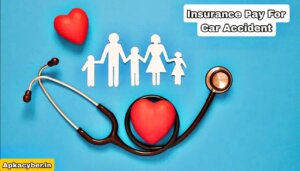
Car accidents are unexpected and often bring significant physical, emotional, and financial challenges. One of the most pressing concerns after an accident is how medical expenses will be paid. A common question that arises is: Does health insurance cover car accidents?
The short answer is yes, but it depends on several factors, including your health insurance policy, state laws, who was at fault, and whether other types of insurance (like auto insurance) apply. In this article, we’ll explore how health insurance interacts with car accidents, the role of auto insurance, coordination of benefits, state laws, and what you should know to be financially prepared in the event of a crash.
1. Introduction to Health Insurance and Car Accidents
Health insurance is designed to help pay for medical expenses resulting from illnesses or injuries, including those sustained in car accidents. However, health insurance doesn’t exist in a vacuum. When a car accident occurs, multiple insurance policies may be involved—yours, the other driver’s, and even government programs like Medicaid or Medicare.
2. Primary vs. Secondary Coverage
A critical concept to understand is primary versus secondary insurance. Primary insurance pays first, and secondary may cover some or all of the remaining costs. When a car accident happens, your auto insurance policy is usually the first line of defense for medical bills, especially if you have specific coverage like Personal Injury Protection (PIP) or Medical Payments (MedPay).
Health insurance often becomes secondary, covering costs that auto insurance does not.
3. Role of Auto Insurance in Medical Coverage
Most auto insurance policies come with optional or required medical coverage. These may include:
-
PIP (Personal Injury Protection): Covers medical expenses regardless of who is at fault.
-
MedPay (Medical Payments Coverage): Pays for medical or funeral expenses for you and passengers.
-
Bodily Injury Liability: Pays for injuries to others when you’re at fault.
-
Uninsured/Underinsured Motorist Coverage: Kicks in if the at-fault driver has no or insufficient coverage.
4. Types of Auto Insurance That Cover Medical Costs
Personal Injury Protection (PIP)
PIP is required in no-fault states, meaning it pays out regardless of who caused the accident. It covers medical expenses, lost wages, and sometimes household services or rehabilitation costs.
MedPay
This coverage is optional in many states and helps cover expenses like:
-
Hospital visits
-
Surgery
-
X-rays
-
Ambulance fees
It has lower limits than PIP but is still valuable for covering initial expenses before health insurance kicks in.
5. How Health Insurance Kicks In
If your auto insurance doesn’t cover all medical expenses or lacks PIP/MedPay, your health insurance will typically step in. The health insurance company will process the claim like any other injury but may inquire about the circumstances of the accident to determine liability.
Depending on your plan, you may still have:
-
Deductibles
-
Copayments
-
Coinsurance
-
Out-of-network charges
6. Coordination of Benefits: Who Pays First?
Coordination of benefits is the process used to determine which insurer pays first. Here’s a general sequence:
-
Auto Insurance (PIP or MedPay)
-
Health Insurance
-
Liability Insurance of the At-Fault Driver
-
Uninsured/Underinsured Motorist Coverage
In cases involving multiple policies, you may need to file claims with each one. Coordination can become complicated, especially in multi-vehicle accidents or when injuries are severe.
7. State Laws and No-Fault Insurance
State laws significantly influence how medical bills are handled. In no-fault states, drivers turn to their own PIP coverage first, regardless of who caused the crash. These states include:
-
Florida
-
Michigan
-
New York
-
New Jersey
-
Massachusetts
-
Pennsylvania
-
And others
In at-fault (tort) states, the party responsible for the accident is typically liable for the damages. However, payment may take time due to investigations or legal proceedings, so health insurance may pay initially.
8. Out-of-Pocket Costs and Deductibles
Even when insurance is in place, you may still be responsible for certain costs:
-
Health insurance deductibles can be thousands of dollars.
-
Coinsurance may require you to pay a percentage of the treatment costs.
-
Out-of-network treatment (like emergency care far from home) can lead to unexpected bills.
Being aware of your coverage and limits is essential to avoid surprise expenses.
9. Subrogation: When Your Health Insurance Wants Reimbursement
Subrogation is the legal right of an insurance company to seek reimbursement from a third party (like the at-fault driver) after paying a claim. If your health insurance pays your medical bills after a crash, they may later pursue the at-fault driver’s insurance to recover those costs.
This process can impact your potential personal injury settlement. In some cases, your insurer may place a lien on your settlement to recoup their expenses.
10. What If You’re at Fault?
If you caused the accident, your health insurance should still cover your injuries—after any applicable auto insurance like MedPay or PIP pays out. However, your auto insurer may also be liable for damages to others, and your premiums may increase.
Some health policies exclude coverage for injuries caused by illegal activities, such as drunk driving. Always check the exclusions section of your policy.
11. Uninsured or Underinsured Motorists
When the at-fault driver lacks sufficient insurance, your uninsured/underinsured motorist (UM/UIM) coverage becomes crucial. It can help pay for:
-
Medical treatment
-
Lost wages
-
Pain and suffering
Health insurance will also contribute, but may not cover non-medical losses like income or emotional distress.

12. Injuries for Passengers and Pedestrians
If you’re a passenger or pedestrian injured in a car accident, multiple options may be available:
-
The at-fault driver’s liability insurance
-
Your own MedPay or PIP coverage (if applicable)
-
Your health insurance
Pedestrians are often covered by the driver’s PIP in no-fault states. In at-fault states, liability insurance becomes the primary payer.
13. When the Other Driver’s Insurance Pays
If another driver is found at fault, their bodily injury liability insurance is responsible for covering your medical costs. However, this process may take months or even years. In the meantime, your health insurance may cover treatment, subject to subrogation later.
14. Filing a Personal Injury Claim
In cases of serious injuries, you may choose to file a personal injury lawsuit. Compensation can include:
-
Medical bills
-
Lost wages
-
Pain and suffering
-
Long-term disability
Health insurance can help manage costs during the legal process, but it’s wise to consult an attorney if you’re pursuing damages.
15. Special Cases: Motorcycle Accidents
Motorcyclists face unique challenges. In many states, PIP is not available for motorcycle riders. That means your health insurance is often the primary payer for injuries, followed by liability or UM/UIM coverage.
Additionally, motorcyclists often face higher medical costs due to the severity of injuries, so having robust health insurance is essential.

16. Legal and Financial Advice
When dealing with multiple insurers and potentially large medical bills, it’s beneficial to consult:
-
Personal injury attorneys for advice on liability and compensation
-
Financial advisors to navigate costs and insurance claims
-
Insurance agents to clarify your policy benefits
Understanding your rights and obligations early on can prevent financial distress later.
17. How to Be Prepared
To be ready for the financial aftermath of a car accident:
-
Review your auto and health insurance policies annually
-
Understand your deductibles, copays, and coverage limits
-
Consider adding MedPay or increasing PIP limits on your auto policy
-
Maintain good health insurance coverage, especially if you ride a motorcycle
-
Create an emergency plan, including a list of medical providers and insurance contacts

18. Conclusion
So, does health insurance cover car accidents? Yes—but it’s only part of the picture. Your auto insurance usually plays a leading role, and state laws, fault determination, and policy specifics can all influence who pays for your care.
Health insurance is a safety net, but not the only one. Understanding how your coverage works—and coordinating it effectively with your auto insurance—can help you avoid costly surprises after an accident. The key is preparation: know your policies, keep them up to date, and don’t hesitate to ask for professional guidance when needed.